Subscribe our newsletter
Please Subscribe our news letter and get update.
[newsletter]

Overview:
About PSVT
Paroxysmal supraventricular tachycardia (PSVT) is an abnormal heart rhythm characterized by rapid, regular heartbeats that start and stop abruptly. It results from a short circuit rhythm in the heart’s upper chamber, leading to a sudden and often unsettling sensation of a racing heart. This overview delves into the causes, symptoms, diagnosis, and treatment options for PSVT, with a strong focus on treatment strategies.
Understanding PSVT:
PSVT arises due to abnormal electrical pathways within the heart’s upper chambers. A normal heartbeat begins with an electrical impulse from the sinus node in the right atrium. In PSVT, a short circuit pathway forms, allowing electricity to loop around and cause rapid contractions in the atria and ventricles. This can lead to symptoms like lightheadedness, palpitations, fatigue, and even fainting.
Causes of PSVT:
Three main conditions can cause PSVT:
Symptoms of PSVT:
Symptoms of PSVT can mimic panic attacks, including:
Diagnosis of PSVT:
Diagnosis begins with a thorough medical history and a 12-lead electrocardiogram (ECG). However, as PSVT episodes are sporadic, additional monitoring methods are needed:
An electrophysiological (EP) study is the definitive test, revealing the exact cause and location of the abnormal pathway. This study also guides catheter ablation treatment.
Treatment Strategies:
The treatment of PSVT focuses on controlling heart rate and preventing symptoms and complications. The approach varies based on patient stability and underlying conditions.
Conclusion:
Paroxysmal supraventricular tachycardia, though disruptive, is treatable. Understanding the underlying causes and risk factors helps guide effective treatment strategies, whether through vagal maneuvers, pharmacological interventions, or catheter ablation. As medical advancements continue, patients with PSVT can expect better control over their symptoms and improved quality of life.
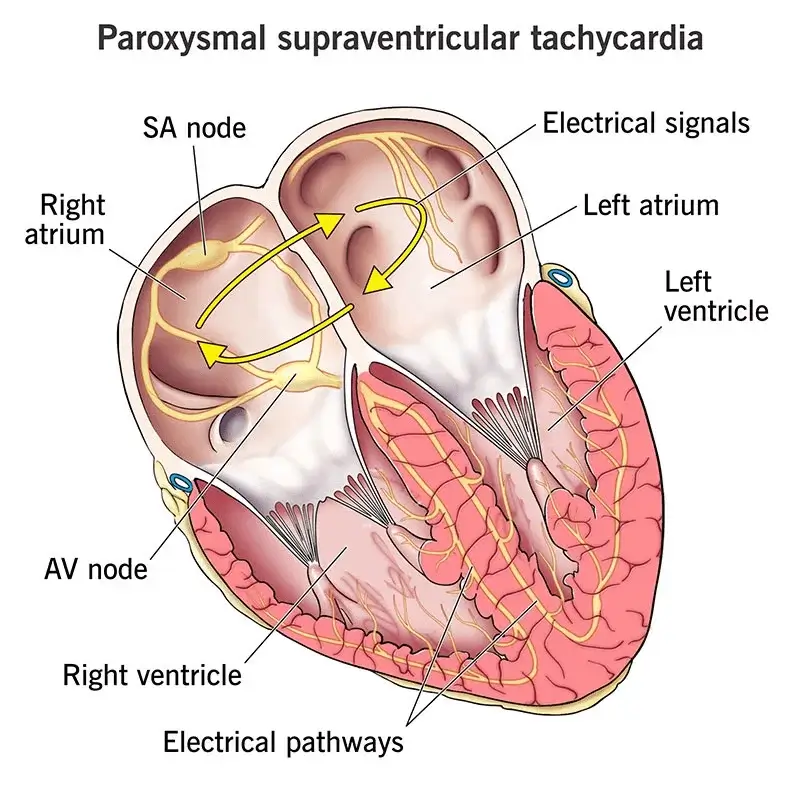
Credits: (https://my.clevelandclinic.org/health/diseases/22232-paroxysmal-supraventricular-tachycardia-psvt)
For a thorough understanding of competitive dynamics within the PSVT domain over the short to mid-long term, gaining insights into the developmental pipeline is crucial for strategically positioning a product in the market.
Market Landscape: Paroxysmal Supraventricular Tachycardia (PSVT): Example Illustration: Distribution by Pipeline Candidates
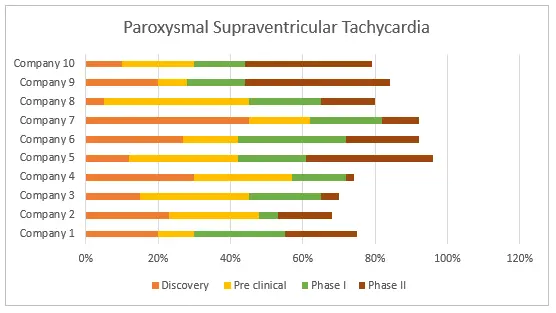
Highlighted in this overview is the involvement of stakeholders in molding treatments for Paroxysmal Supraventricular Tachycardia (PSVT), covering financial considerations, treatment options, and recent breakthroughs.
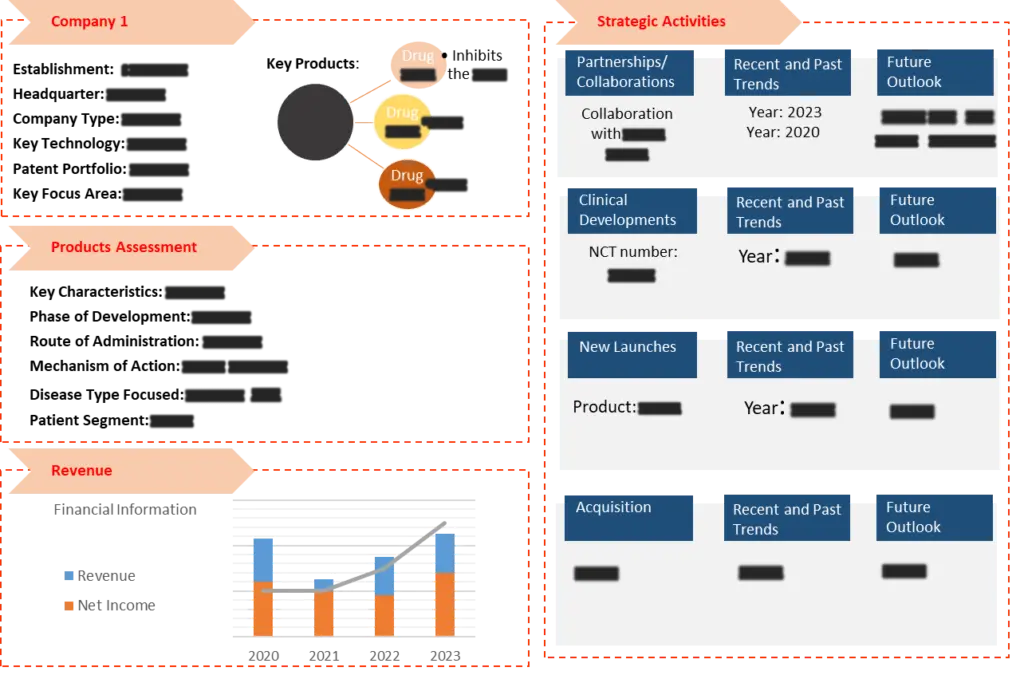
Studying patents offers invaluable insights into pioneering advancements and emerging technologies within the domain of Paroxysmal Supraventricular Tachycardia (PSVT), enriching our grasp of innovative strategies for novel treatments.
Geographical bifurcation of the aforementioned assignees:
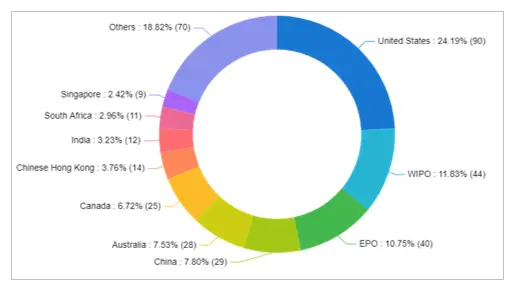
On the basis of current assignees:
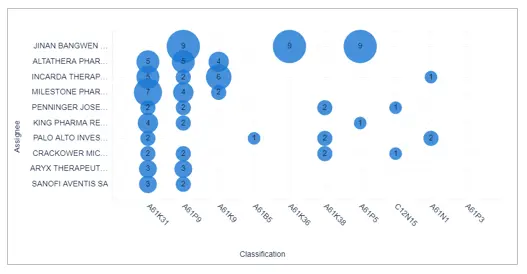
In the past half-decade, several drugs/therapies have undergone evaluation in registered clinical trials spanning various regions, progressing to advanced developmental phases for Paroxysmal Supraventricular Tachycardia (PSVT).
Paroxysmal Supraventricular Tachycardia: Clinical Trial Analysis
Example illustration 2: Distribution of Clinical Trials by Status:
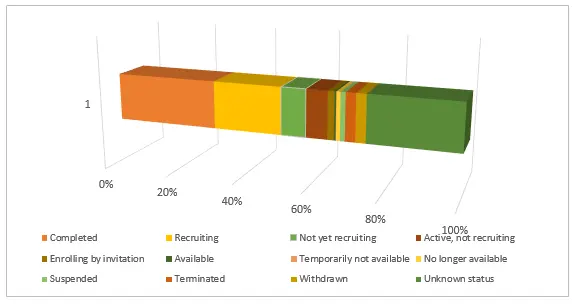
Example illustration 3: Distribution of Clinical Trials by Phase of Development:
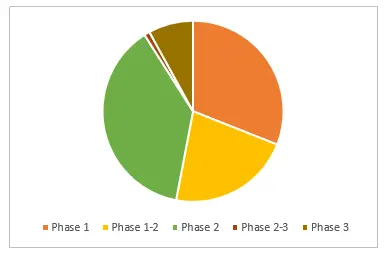
Backed by endorsement for numerous potential drug candidates and observing favorable clinical results, the Paroxysmal Supraventricular Tachycardia (PSVT) market is stratified into diverse segments, positioned for significant expansion in the forthcoming decade.
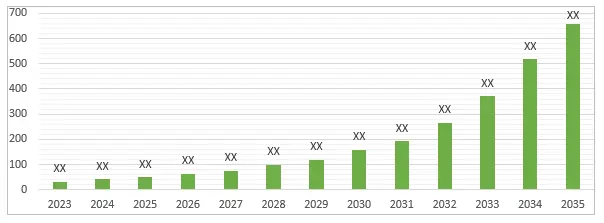
Paroxysmal Supraventricular Tachycardia: Market, 2023-2033 (USD Million)
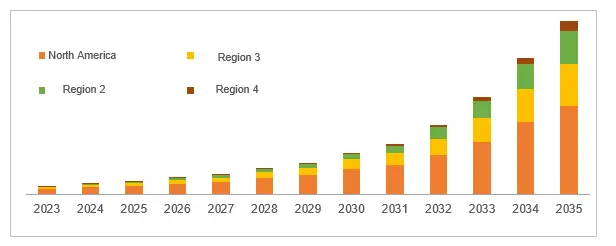
Revenues by Key Geographical Regions, 2023-2033 (USD Million)
Considering the existence of multiple companies in the field of Paroxysmal Supraventricular Tachycardia (PSVT), potential contenders could surface in the market, striving to establish their supremacy.
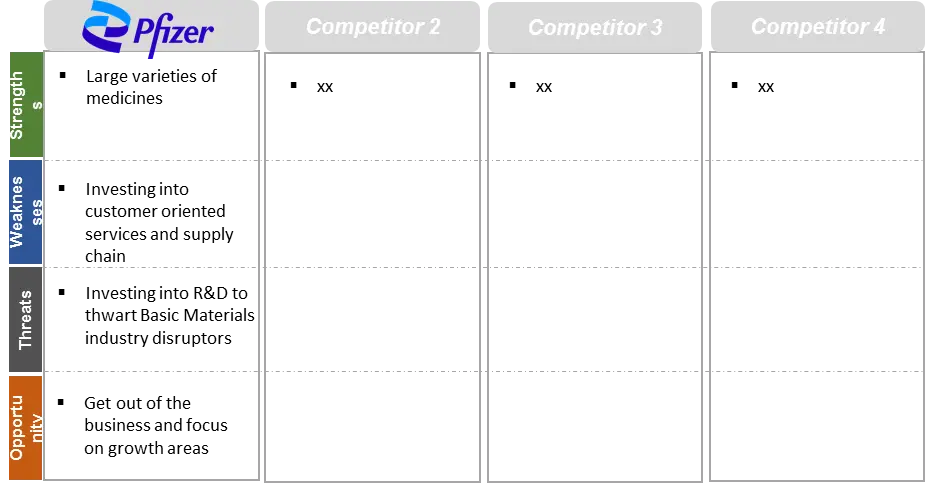
In order to give the most precise estimations and forecasts, Wissen Research uses an extensive and iterative research approach that is focused on reducing deviation. The company blends top-down and bottom-up methodologies for market segmentation and quantitative estimation. In addition, data triangulation, which examines the market from three separate angles, is a recurrent topic present in all of our research studies. Important components of the approach used for all of our studies include the following:
Preliminary data mining
On a wide scale, unprocessed market data is collected. Continuous data filtering makes sure that only verified and authenticated sources are taken into account. Additionally, data is extracted from a wide range of reports in our repository and from a number of reputable premium databases. We gather information from raw material suppliers, distributors, and purchasers to help with this since understanding the entire value chain is crucial for a thorough understanding of the market.
Surveys, technical symposia, and trade magazines are used to gather information on technical concerns and trends. Technical information focusing on white space and freedom of movement is also obtained from an intellectual property standpoint. Additionally, information on the industry’s drivers, constraints, and pricing patterns is obtained. As a result, a variety of original data are included in the material that is then cross-validated and certified with published sources.
Statistical model
We use simulation models to generate our market projections and estimates. Every study receives a special model that is tailored to it. Data for market dynamics, the technology environment, application development, and pricing patterns are gathered and supplied into the model all at once for analysis. The relative relevance of these factors is investigated, and their impact on the forecast period is assessed, using correlation, regression, and time series analysis. The process of market forecasting combines technological analysis with economic strategies, practical business acumen, and subject expertise.
Econometric models are frequently used for short-term forecasting, but technology market models are typically employed for long-term forecasting. These are based on a confluence of the business environment, regulatory environment, economic projection, and technical landscape. In order to develop global estimates, it is preferable to estimate markets from the bottom up by integrating data from key regional markets. This is required to ensure accuracy and a complete comprehension of the subject. Among the variables taken into account for forecasting are:
Regulations and anticipated developments
We give these criteria weights and use weighted average analysis to assess their market influence in order to calculate the anticipated market growth rate.
Primary research | Secondary research |
· Manufacturers · Technology distributors and wholesalers · End-user surveys · Consumer surveys | · Company reports and publications · Government publications · Independent investigations · Economic and demographic data · Online searches · Literature studies · Research reviews · Case studies · Reference customers |
1.1 Overview of Paroxysmal Supraventricular Tachycardia (PSVT)
1.1.1 Definition and Types of PSVT
1.1.2 Incidence and Prevalence of PSVT
1.2 Epidemiology and Incidence Rates
1.2.1 PSVT Incidence in Different Populations
1.2.2 Prevalence and Variants of PSVT
1.3 Symptoms and Diagnosis
1.3.1 Common Symptoms of PSVT
1.3.2 Diagnostic Methods and Electrocardiographic Evaluation
1.4 Pathophysiology
1.4.1 Mechanisms of PSVT Onset
1.4.2 Physiological Effects of PSVT on Heart Function
1.5 Causes and Risk Factors
1.5.1 Underlying Factors Contributing to PSVT
1.5.2 Risk Factors and Triggers for PSVT Episodes
1.6 Treatment Approaches
1.6.1 Non-Invasive Management of PSVT
1.6.2 Invasive Procedures and Catheter Ablation
2.1 Cardiac Anatomy and Physiology in PSVT
2.1.1 Cardiac Chambers and Electrical Pathways
2.1.2 Characteristics of PSVT in Different Heart Structures
2.2 Clinical Presentation and Diagnostic Criteria
2.2.1 Identifying Clinical Indicators of PSVT
2.2.2 Diagnostic Techniques and ECG Patterns
2.3 Classification and Prognostic Factors
2.3.1 Classifying PSVT Episodes
2.3.2 Predictors of Outcome and Treatment Response
3.1 Non-Invasive Approaches to Manage PSVT
3.1.1 Vagal Maneuvers and Breathing Techniques
3.1.2 Use of Pharmacological Agents for Acute Termination
3.2 Invasive Interventions for PSVT
3.2.1 Catheter Ablation Procedures
3.2.2 Emergency Cardioversion and Surgical Options
4.1 Global PSVT Treatment Market Overview
4.1.1 Market Size and Growth Trends
4.1.2 Geographical Distribution of PSVT Incidents
4. 2 Market Trends in PSVT Management
4.2.1 Advancements in PSVT Treatment
4.2.2 Emerging Technologies and Innovations
4.3 Market Drivers and Challenges
4.3.1 Factors Influencing Market Growth
4.3.2 Challenges in PSVT Management
5.1 Ongoing Clinical Trials and Research Studies
5.1.1 Investigational Therapies and Treatment Approaches
5.1.2 Trial Progress and Patient Recruitment Status
5.2 Promising Therapies in Development
5.2.1 Novel Drugs and Medical Devices for PSVT
5.2.2 Potential Impact on PSVT Management
5.3 Advancements in Interventional Procedures
5.3.1 Innovations in Catheter Ablation Techniques
5.3.2 Outcomes of Minimally Invasive Interventions
5.4 Drugs by Development Phase
5.4.1 Overview of Drugs in Various Development Stages
5.4.2 Pipeline Analysis and Projected Market Impact
5.5 Key Regulatory Events
5.5.1 Regulatory Approvals and Compliance Considerations
5.5.2 Patient Safety and Adverse Event Monitoring
6.1 Medical Devices for PSVT Management
6.1.1 Emerging Vascular Catheters and Mapping Systems
6.1.2 Implantable Devices for Rhythm Control
6.2 Emerging Therapeutic Products
6.2.1 Novel Drug Candidates for PSVT Treatment
6.2.2 Drug Delivery Approaches and Formulations
6.3 Treatment Modalities and Techniques
6.3.1 Advancements in Ablation Technologies
6.3.2 Hybrid Procedures for Complex PSVT Cases
7.1 Key Patents in PSVT Therapeutics
7.1.1 Patent Landscape and Intellectual Property Trends
7.1.2 Notable Innovations and Patent Holders
8.1 Leading Players in PSVT Management
8.1.1 Key Industry Participants and Market Presence
8.1.2 Product Portfolios and Research Endeavors
8.2 Company Profiles
8.2.1 Business Overview and Growth Strategies
8.2.2 Collaborations and Merger & Acquisition Activities
8.3 Market Share Analysis
8.3.1 Market Positioning of Major Companies
8.3.2 Competitive Landscape and Industry Concentration
8.4 SWOT Analysis
8.4.1 Key Player Assessment and Strategic Insights
8.4.2 SWOT Analysis of PSVT Treatment Market
8.5 Unmet Needs in PSVT Management
8.5.1 Challenges and Future Directions in Treatment
8.5.2 Potential Areas for Research and Improvement
9.1 Projected Growth of PSVT Treatment Market
9.1.1 Market Size and Revenue Projections
9.1.2 Growth Opportunities and Forecast Factors
9.2 Market Opportunities and Expansion Regions
9.2.1 Untapped Markets and Strategic Growth Regions
9.2.2 Market Penetration and Geographic Expansion
9.3 Evolution Predictions for the Market
9.3.1 Trends Shaping the PSVT Management Landscape
9.3.2 Long-term Outlook and Prospective Developments
10.1 United States Market Size
10.1.1 PSVT Market Size in the United States
10.1.2 Treatment Modalities in the US PSVT Market
10.2 Europe Market Size
10.2.1 Size of PSVT Treatment Market in Europe
10.2.2 Trends in PSVT Therapies in European Market
10.3 Asia-Pacific Market Size
10.3.1 Market Size for PSVT Treatment in Asia-Pacific
10.3.2 Treatment Approaches in Asia-Pacific PSVT Market
11.1 Emerging Technologies in PSVT Management
11.1.1 Advancements in Diagnostic and Interventional Tools
11.1.2 Potential Impacts on Patient Outcomes
11.2 Personalized Medicine and Biomarker Development
11.2.1 Precision Medicine Approaches in PSVT
11.2.2 Biomarkers for Patient Stratification and Monitoring
11.3 Exploring Immunotherapeutic Possibilities
11.3.1 Immunomodulation Strategies in PSVT Treatment
11.3.2 Role of Immune-Based Interventions
S.no | Key Highlights of Report | |
1. | Patent Analysis | · Top Assignee · Geography focus of top Assignees · Assignee Segmentation · Network analysis of the top collaborating entities in Paroxysmal Supraventricular Tachycardia treatments patent applications · Technology Evolution · Key Patents · Application and Issued Trend · Key technology |
2. | Market analysis | · Current Treatment Options · Emerging Therapies and Research Developments (by product analysis and scientific analysis) · Strategic activities · Therapeutic activity of drugs · Drivers and barriers · Company portfolio |
3. | Clinical Trials | · Analysis of clinical trial through graphical representation · Coverage of treatments from pre-clinical phases till commercialization (also including terminated and completed studies) |
4. | Forecast | · Detailed comprehension of the historic, current and forecasted trend of market by analysis of impact of these treatments on the market |
5. | Key Players | · Detailed profiles of the key players that are engaged in the development of approved drugs · Strategic Activities |
6. | Opportunity Analysis | · Technology evolution based on problem solution · Potential licensees · Geography of suppliers · Treatment trends · SWOT |
7. | KOLs | · A detailed analysis and identification of the key opinion leaders (KOLs), shortlisted based on their contributions |
LIST OF FIGURES
Figure number | Description |
Figure 1 | Terminology of Paroxysmal Supraventricular Tachycardia (PSVT) Over The Years |
Figure 2 | Paroxysmal Supraventricular Tachycardia (PSVT) Treatment– History and Present |
Figure 3 | Projection of Paroxysmal Supraventricular Tachycardia (PSVT) till 2033 in different geographies |
Figure 4 | Technology Categorization Of Drug Delivery Methods For Paroxysmal Supraventricular Tachycardia (PSVT) |
Figure 5 | Recent Technology Trends in Paroxysmal Supraventricular Tachycardia (PSVT) |
Figure 6 | Technology Evolution in Drug Delivery Market of Paroxysmal Supraventricular Tachycardia (PSVT) |
Figure 7 | Geographical Distribution of Patents of Top Assignees |
Figure 8 | Assignee Segmentation (Companies) |
Figure 9 | Assignee Segmentation (Educational Establishment) |
Figure 10 | Patent Based Key Insights Of xx |
Figure 11 | Patent Based Key insights of xx |
Figure 12 | Patent Based Key insights of xx |
Figure 13 | Geographic Distribution of the Universities/Research Organizations Filling Patents On Various Drug Delivery Approaches |
Figure 14 | Key Summary Regarding the Patent Filing On Paroxysmal Supraventricular Tachycardia (PSVT) |
Figure 15 | Product Pipeline of Different Approaches with Companies Name |
Figure 16 | Portfolio for Approved Product |
Figure 17 | Clinical Trials Conducted till Date by Different Companies and Universities |
Figure 18 | Clinical Trials based Key Insights |
Figure 19 | Key Growth Drivers for Paroxysmal Supraventricular Tachycardia (PSVT) Market |
Figure 20 | Restraints for Paroxysmal Supraventricular Tachycardia (PSVT) Market |
Figure 21 | xx Portfolio (Top Player) |
Figure 22 | xx Portfolio (Top Player) |
Figure 23 | xx Portfolio (Top Player) |
Figure 24 | xx Portfolio (Top Player) |
Figure 25 | xx Portfolio (Top Player) |
Figure 26 | xx Portfolio (Start-up) |
Figure 27 | xx Portfolio (Start-up) |
Figure 28 | xx Portfolio (Start-up) |
Figure 29 | Strategic Activities Including Collaboration, Partnerships and Acquisitions |
Figure 30 | Research Methodology for Patent, Selection and Analysis |
Figure 31 | Research Methodology for Scientific Literature, Selection and Analysis |
Figure 32 | Research Methodology for Clinical Trials, Selection and Analysis |
LIST OF GRAPHS
Graph number |
Description |
Graph 1 | Number of people worldwide with Paroxysmal Supraventricular Tachycardia (PSVT) |
Graph 2 | Problem Solution Analysis |
Graph 3 | Top Assignees in Paroxysmal Supraventricular Tachycardia (PSVT) |
Graph 4 | Technology Focus of Top Assignees (IPC-CPC Classes) |
Graph 5 | Top Countries of Origin of Patents |
Graph 6 | New entrants in drug delivery field |
Graph 7 | Legal Status |
Graph 8 | Most Cited Patents |
Graph 9 | Patents with Largest Invention Families |
Graph 10 | Most Claim-Heavy Patents |
Graph 11 | Filing Trends |
Graph 12 | Literature Filling Trend During Time Period (2018 – 2023) |
Graph 13 | Clinical Trial Filing Timeline |
Graph 14 | Recruitment Status of the Clinical Trials Related to the Different Drug Delivery Approaches |
Graph 15 | Clinical Trials Phases with Respect to Specific Drug Delivery Approach |
Graph 16 | Weighted Scores for Top 64 Players According to Benchmarking Criteria |
Graph 17 | Paroxysmal Supraventricular Tachycardia (PSVT) (CAGR: 2023-2033) |
Graph 18 | Paroxysmal Supraventricular Tachycardia (PSVT) Market Share: Distribution by Key Geographical Area, 2023-2033 |
LIST OF TABLES
Table number | Description |
Table 1 | Parameters included and excluded for conducting the analysis |
Table 2 | Technology Classes with Definitions |
Table 3 | Patent Litigation |
Table 4 | Highest Market Valued Patents |
Table 5 | SWOT Analysis of Top 3 Players |
Table 6 | Parameters and their score for Benchmarking |
Table 7 | Weighted scores for top 5 players according to benchmarking criteria |
Please Subscribe our news letter and get update.
© Copyright 2024 – Wissen Research All Rights Reserved.